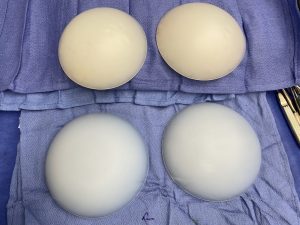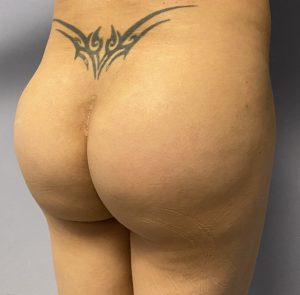Background: Implants remain the definitive buttock augmentation procedure when fat grafting (BBL surgery) has ‘failed’ or there are inadequate fat stores to harvest. While implants provide an assured volume outcome their long-term success (lack of immediate or relayed complications) is highly dependent on the tissue pocket in which it was placed. As a general rule the more soft tissue coverage an implant has its complication rates decrease. This means the intramuscular pocket is preferred over the subfascial pocket in most cases.
Besides the increased technical challenge of creating the intramuscular implant pocket, its other ‘liability’ is the limited size of the buttock implant that can be place. In my experience implant sizes are limited to the 300cc to 400cc range in most patients. This is the result of the intramuscular pocket being an artificially created space, it is not a natural tissue place that is being dissected.
Since the initial buttock implant size may be limited the question is can a bigger implant be placed later. The question is not whether an initial buttock implant can be increased in size secondarily but when and by how much it can be replaced in the intramuscular space.
Case Study: This female desired a larger buttock implant size from an initial 400cc implant augmentation in the intramuscular space from several years previously. It was preoperatively decided that at least a 50% side increase was necessary to make the surgery worthwhile.


Like all implant augmentations the initial volume creates the largest change in tissue size. Thereafter the volume increase has a diminishing return on size change. In other words it take a lot more volume increase to make a visible change and a surgical implant replacement worthwhile than most would think. The minimum implant size change should be 30% volume increase for a modest change and 50% or more for a more significant augmentation change.
Key Points:
1) A first buttock implant augmentation can always be secondarily enhanced with second stage larger implants.
2) As a general rule implants of at least 50% larger in size can be placed as the first implant acts as a tissue expander.
3) The recovery from a second stage buttock implant replacement can be predicted to be 50% less than the initial placement.
Dr. Barry Eppley
World-Renowned Plastic Surgeon





